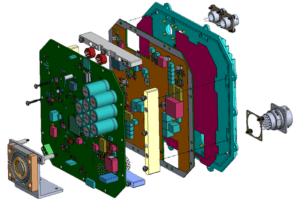Signal Integrity
Signal integrity refers to the quality and reliability of the electrical signals as they travel through the PCB. It’s an essential aspect of PCB design, particularly in high-speed and high-frequency applications, where maintaining the integrity of the signal is crucial for the proper functioning of the electronic device. Here are the key elements that define signal integrity in PCBs:
-
Signal Distortion: Signal integrity is primarily concerned with minimizing signal distortion. Distortion can occur due to various factors like impedance mismatches, signal reflections, crosstalk, and electromagnetic interference (EMI). A signal that maintains its shape and timing as it travels through the PCB is said to have good signal integrity.
-
Impedance Matching: One of the critical factors in maintaining signal integrity is the control of impedance, which is the opposition to the flow of an electrical signal in a circuit. Proper impedance matching throughout the circuit helps prevent signal reflections and loss, thereby maintaining signal integrity.
-
Crosstalk: Crosstalk refers to the unwanted coupling of signals between adjacent conductive paths (like traces or wires) in a PCB. It can cause interference and degrade the quality of the signals. Managing trace spacing, orientation, and shielding are methods used to minimize crosstalk.
-
Signal Attenuation: This is the reduction in signal strength as it travels through the PCB. Factors contributing to attenuation include the resistance of the traces, the dielectric properties of the substrate, and the length of the signal path. Designing to minimize these factors is crucial for maintaining signal strength.
-
Rise Time and Bandwidth: Faster rise times (the time it takes for a signal to change from low to high) and higher bandwidths (the range of frequencies the signal occupies) in modern electronics make signal integrity even more critical. These factors increase the susceptibility of the signal to integrity issues.
-
PCB Layout and Routing: The physical layout of a PCB, including trace geometry, layer stacking, and via placement, has a significant impact on signal integrity. Proper routing techniques, such as differential signaling and controlled impedance traces, are employed to maintain signal integrity.
-
Power Integrity: Closely related to signal integrity, power integrity ensures stable and clean power delivery to the components on the PCB. Fluctuations and noise in the power supply can adversely affect signal integrity.
-
Electromagnetic Compatibility (EMC): Ensuring that the PCB does not emit excessive electromagnetic radiation and is not unduly susceptible to external electromagnetic fields is part of maintaining signal integrity and is essential for EMC compliance.
-
Design Tools and Simulation: Advanced PCB design tools and simulation software are used to analyze and predict signal integrity issues during the design phase, allowing designers to make necessary adjustments before manufacturing.



